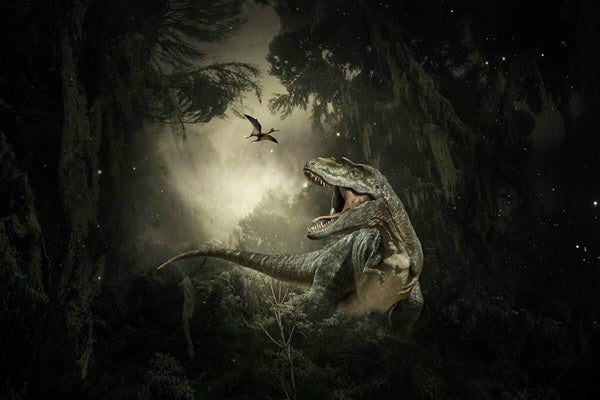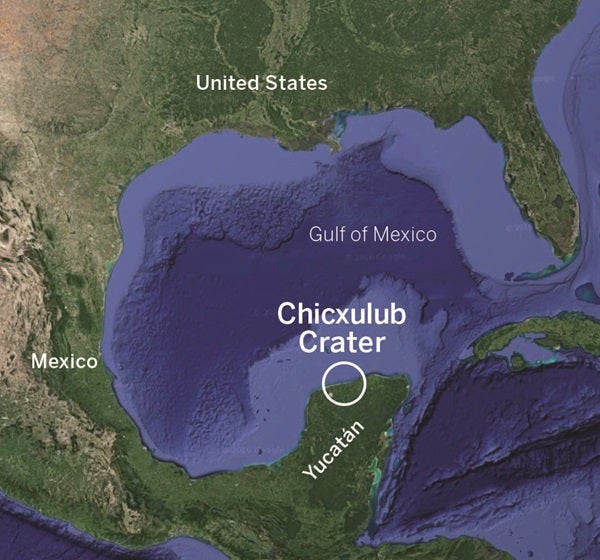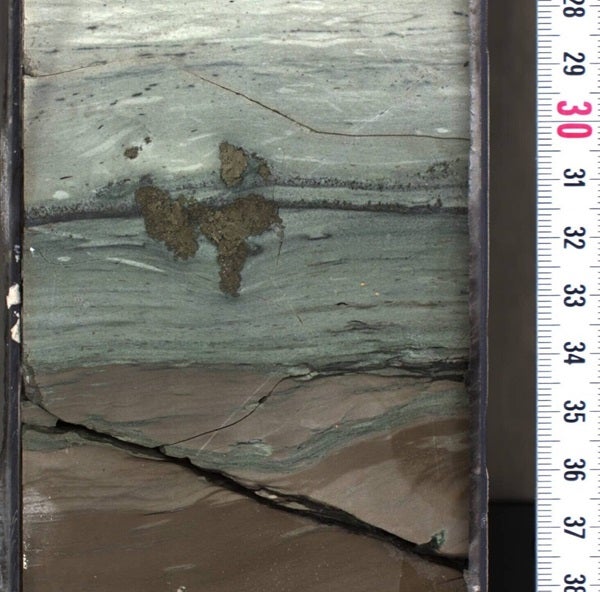
An asteroid smashed into the Yucatán Peninsula 66 million years ago, killing some 75 percent of life on Earth, including all non-avian dinosaurs.Willgard Krause/Pixabay
(Editor’s note: This article was updated Monday, Oct. 30, 2023, with information from a study in Nature Geoscience. The study shows that fine particles kicked up from the impact may have blocked the sun and prevented photosynthesis for up to two years. Katherine Sanderson writes a helpful summary of the study here on nature.com. )
Some 66 million years ago, a city-size asteroid barreled through Earth’s atmosphere and slammed into the shallow waters off the Yucatán Peninsula in the Gulf of Mexico. The cosmic artillery strike gouged a 125-mile-wide (200 km) crater in Earth surface, lofting plumes of vaporized rock and debris into the air that globally blocked out views of the Sun for years or decades. After the initial blast, the reduced sunlight caused Earth’s surface temperature to plummet by as much as 50 degrees Fahrenheit (28 degrees Celsius), aiding in a mass extinction that killed 75 percent of life on Earth.
But eventually, the dust settled.
Fast forward to the 1980s, and scientists uncovered traces of asteroid dust, finding it scattered around the globe within the same geological layer that corresponds to the dinosaurs’ extinction. In the following decade, Chicxulub Crater was discovered in the Gulf of Mexico. And because the crater appeared to be the same age as the global rock layer enriched with asteroid dust, researchers were fairly certain they had the story of the dinosaurs’ demise figured out.
Now, a new study seems to have officially closed the case for good.

Named after a nearby town, Chicxulub crater is located just offshore. New evidence confirms the site is almost undoubtedly the epicenter of the dinosaurs’ demise.The University of Texas at Austin/Jackson School of Geosciences/Google MapsThe latest evidence comes from rock core samples plucked from Chicxulub Crater itself, which is buried beneath the seafloor in the Gulf of Mexico. In the most recent study based on these samples, which were collected during a 2016 mission co-led by the University of Texas at Austin, researchers say they’ve found a telltale sign of asteroid dust. It comes in the form of iridium, which is common in some types of asteroids, yet rare in Earth’s crust.The researchers found the highest concentration of iridium-peppered rock, which also contains a mixture of ash from the impact and ocean sediment, within a sample taken from the crater’s peak ring. This sample likewise shows elevated levels of other elements commonly associated with asteroids, resulting in a chemical fingerprint that resembles the asteroid dust found around the globe in the 1980s, and precisely matches the geological location of the impact itself.
Seen here is the section of rock core from Chicxulub Crater in which researchers found a concentration of iridium, a tracer for asteroid material, mixed with ash from the impact and ocean sediment.The International Ocean Discovery Program.We combined the results from four independent laboratories around the world to make sure we got this right,” said lead author Steven Goderis, a geochemistry professor at Vrije Universiteit Brussel, in a press release.“We are now at the level of coincidence that geologically doesn’t happen without causation,” added Sean Gulick, a professor at UT Jackson School of Geoscience and co-author of the study.Details on the asteroid dust found in Chicxulub Crater were published in Science Advances.





